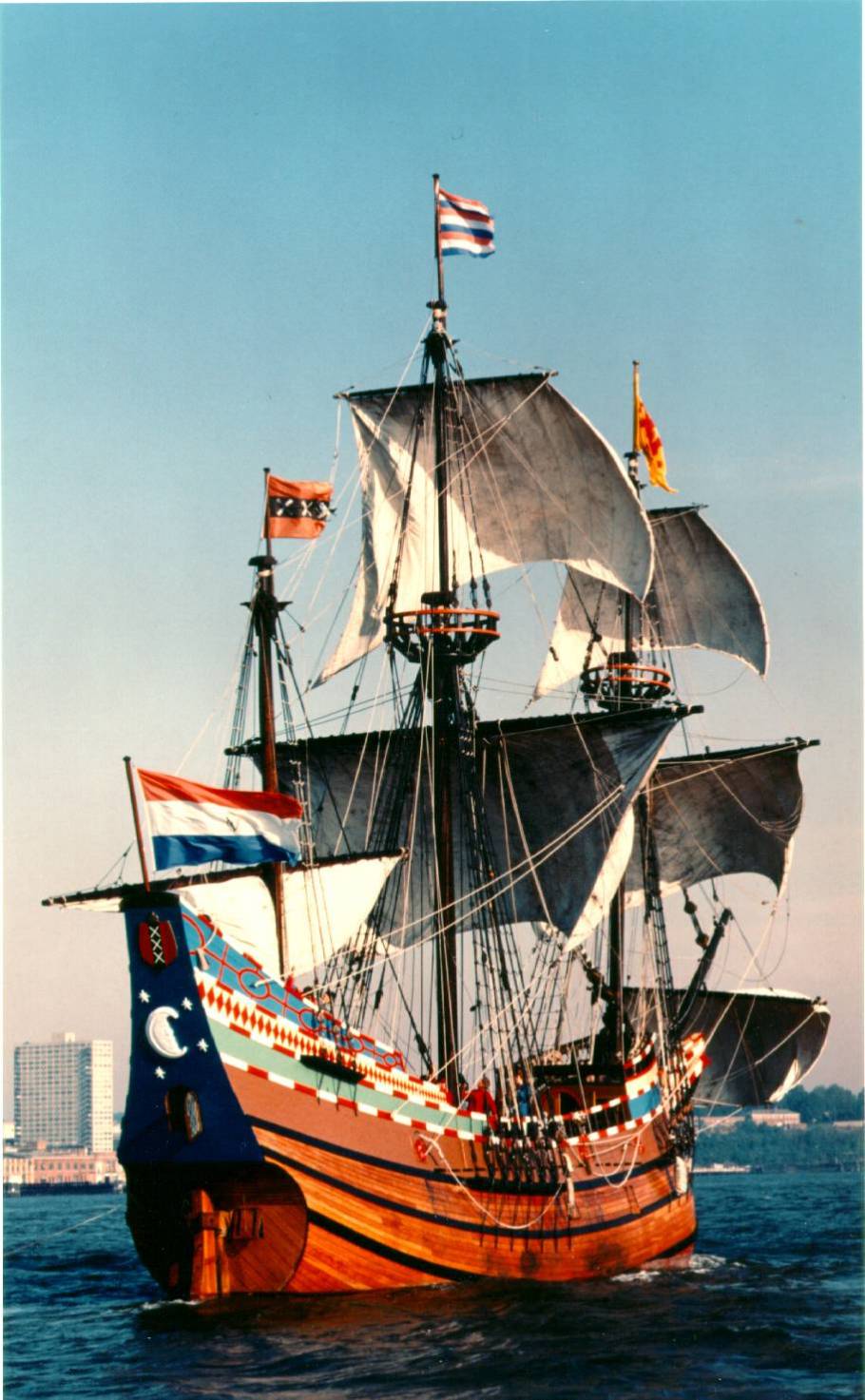 This picture shows the map and the route Hudson traveled along during his explorations. |
 This picture shows a replica of the "Half-Moon," one of the three ships he used when he explored. |
|
In 1607 and 1608, Hudson was commisioned by the Muscovy Company to find a fast northerly passage from England to the "islands of spicery." He was provided with an old, small ship, the Hopewell which he used both years. Both times he attempted and both times he was foiled by ice floes. So in 1609, the Dutch East India Company hired Hudson in an attempt to shorten the voyage around the Cape of Good Hope, which he was provided with the 80-ton ship, the Half-Moon, and a crew of 20 sailors (English and Dutch). The voyage nearly turned to mutiny until he managed to persuade his crew to assist him in seeking the alternative route to the lucrative spices. Along the way, they settled along the coast of Maine, fished and traded with local Indians, and continued south to the Chesapeake and Delaware Bays. Then, they started north to the mouth of the Hudson River once he realized neither of the bays were entrances to the Northwest Passage. On September 12, 1609, he began his exploration of the river. He was able to sight cities of New York and trade with local Native Americans. On October 2, Native Americans grew hostile of Hudson so he killed several Indians that tried to get in his way. On October 2nd, he left to sail back to Datmouth and arrived there safely on November 7. In 1610, Hudson made his final voyage under the Muscovy Company, which provided him with a ship called the discovery. Hudson sailed along the Thames River and passed through Scotland, Greenland, and Iceland. In June 1610, he reached the Hudson Strait, which he named the headlands Cape Digges and Cape Wholstenholme. But Hudson became greedy and tried to enter the Hudson Strait's "Furious Overfall." He was prevented by huge icebergs , but he continued south to James Bay still looking for a passage to the Pacific. Conditions were against him; it was extremely cold, a limited amount of food, and a discouraged crew. In 1611, his ship was frozen into the water, he was cast adrift into a small boat, and was never heard of again. no one knows how long he and his loyal crew of nine survived so people just approximate their deaths in the year 1611. |
||